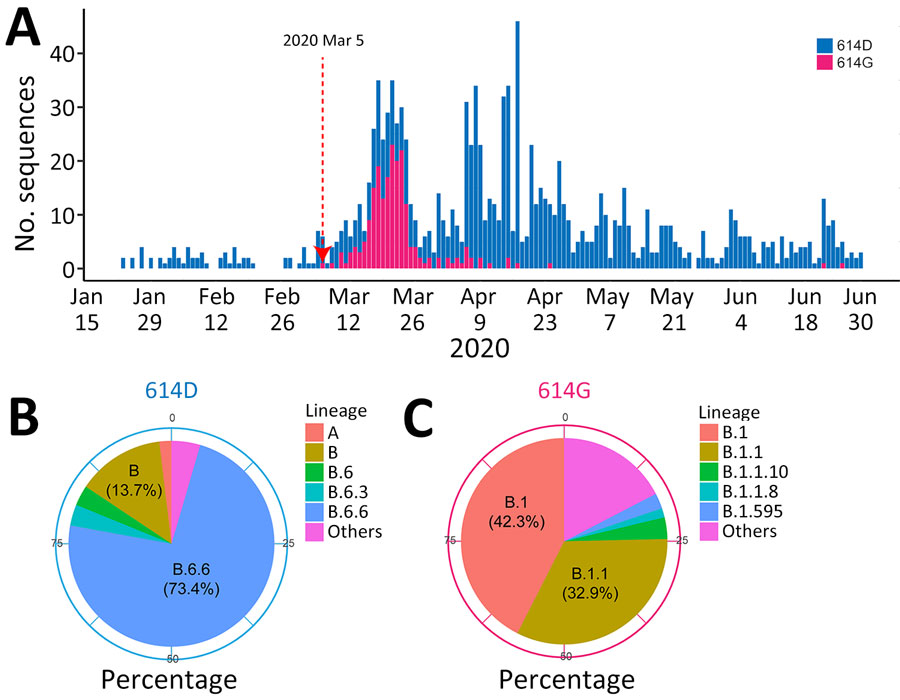Volume 31, Number 8—August 2025
Research
Rapid Emergence and Evolution of SARS-CoV-2 Intrahost Variants among COVID-19 Patients with Prolonged Infections, Singapore
Figure 4

Figure 4. Evolutionary landscape in study of rapid emergence and evolution of SARS-CoV-2 intrahost variants among COVID-19 patients with prolonged infections, Singapore. A) Number of SARS-CoV-2 cases carrying the spike 614D or 614G mutations in all available SARS-CoV-2–positive samples. Dotted red line shows the first detection of the 614G mutation in Singapore. B, C) Percentages of different SARS-CoV-2 Pango lineages containing the 614D (B) or 614G (C) residues in the spike protein.
Page created: May 31, 2025
Page updated: July 21, 2025
Page reviewed: July 21, 2025
The conclusions, findings, and opinions expressed by authors contributing to this journal do not necessarily reflect the official position of the U.S. Department of Health and Human Services, the Public Health Service, the Centers for Disease Control and Prevention, or the authors' affiliated institutions. Use of trade names is for identification only and does not imply endorsement by any of the groups named above.